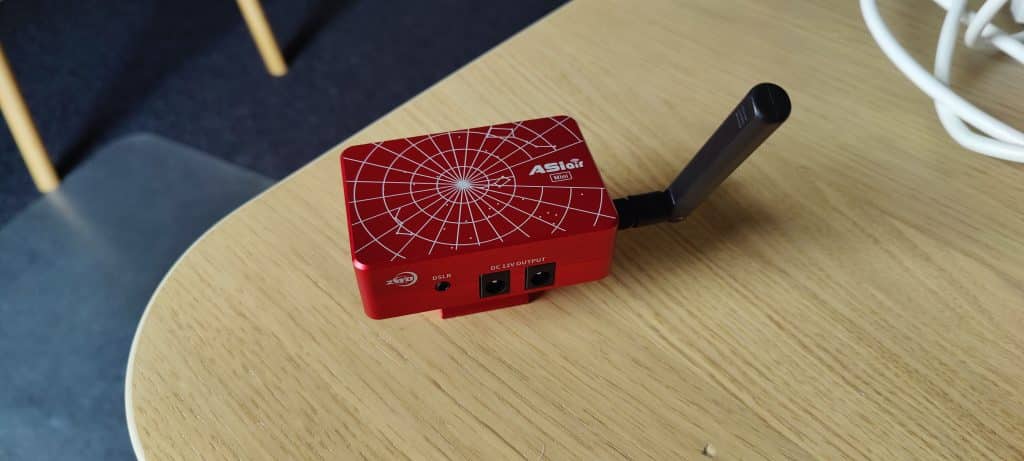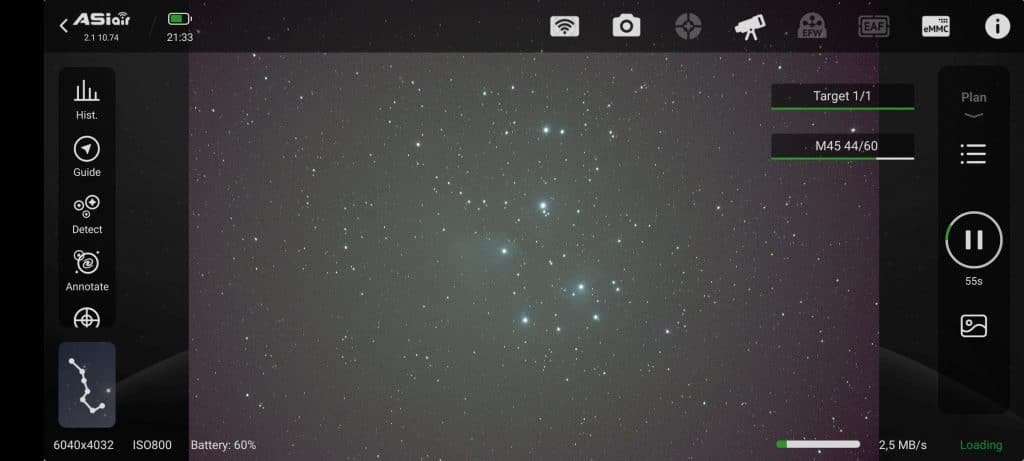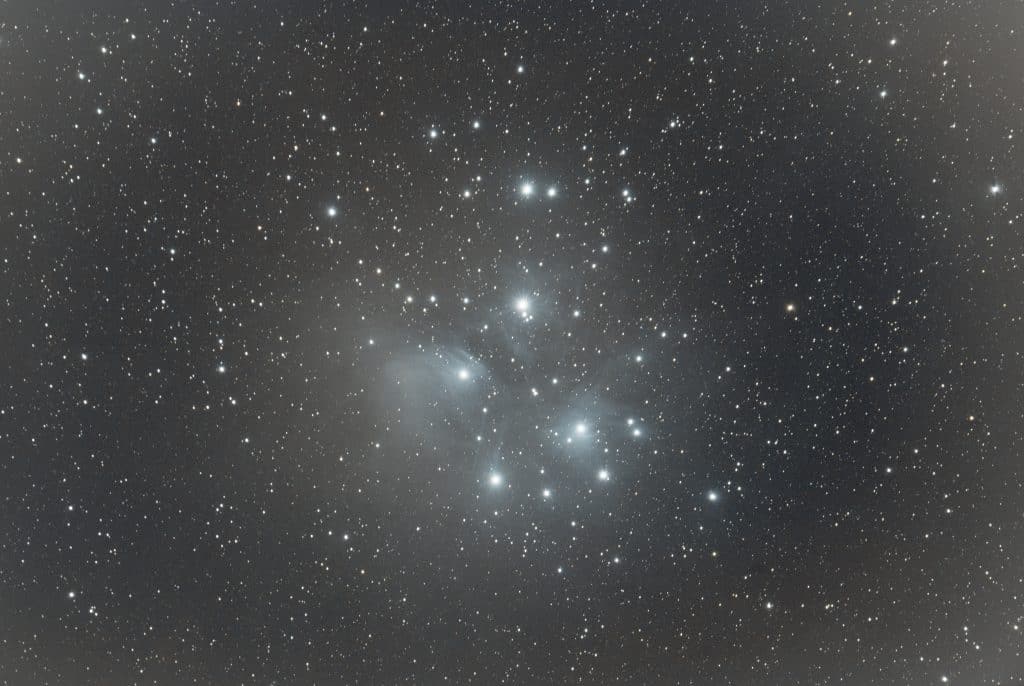The weather here in Denmark has been overcast for the past two months. But now there has been an improvement in the weather. Since the beginning of March the weather has been more stable with at least a clear view of the stars every other day. This allowed me to get a couple of hours under stars with the ASIair mini. So far it has proven to be a success.

I aimed to see if I could make my StarAdventurer GTi operate remotely and get a feeling for the workflow using the ASIair mini, see the image above. I decided to photograph the Pleadies (M45) again just like in my most recent project. This time I raised my integration time from 30 seconds to 60 seconds getting reasonable sub-frames with almost perfectly round stars. ZWO the manufacturer of the ASIair claims that it makes doing astrophotography as easy as 1, 2, 3… And I must say that I am convinced by the ASIair. Getting the polar alignment was dead easy. Having done the polar alignment I started the plan I had made for my observations. The plan was to observe M54 the Pleiades and see how long sub-frame exposures I could manage on my StarAdventurer GTi without auto-guiding to get an idea about the improvements on my astrophoto rig.
Thoughts on working with the ASIair Mini
Before getting the ASIair I was limited to exposure times of 30 seconds because I had no intervalo-meter. I had to compensate the lack of exposure time by increasing the ISO at the cost of more noise. But with the ASIair mini I could easily do 60-second exposures, and still achieve reasonably round stars. An example of an exposure taken with the ASIair mini can be seen in the figure below.

With the aid of the ASIair mini we can run 60-second exposures at ISO 800 which should provide a clearer picture than the previous pictures taken at ISO 3200. Unfortiunately I did not have time to take calibration frames, and I did not have a library of calibration data lying around to help me out, so I expected the final image to show some vignetting and artefacts from calibration missing. My thoughts so far regarding the ASIair mini have been extremely positive and I expect that we are going to be best of friends for quite a while.
Pixinsight – is it worth it?
Now I also decided to give Pixinsight a test – so I got my self the trial license for Pixinsight to see if it will work well with the images that I have taken. Below you can see a very simple processed image of M45 made with Pixinsight. The software has only been used for stretching and background neutralisation. I am quite satisfied with this image despite showing signs of not have the proper amount of calibrations added. The image was stacked in Siril before transferring the stack to Pixinsight, and my stack contained 59 images with and exposure time of 60 seconds a frame yielding a total exposure time of 3540 seconds or about 59 minutes.


